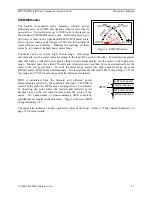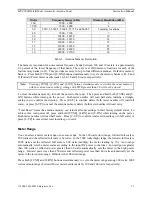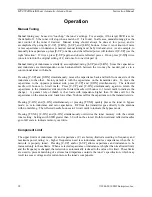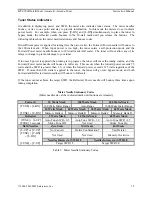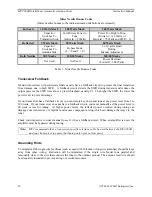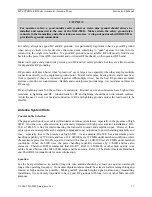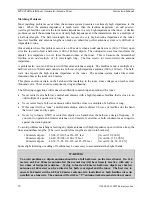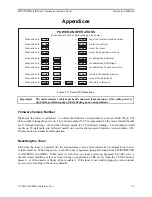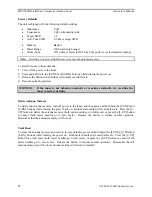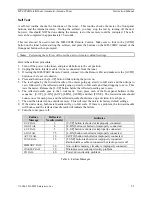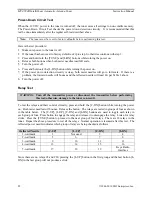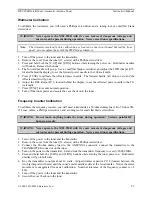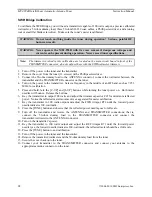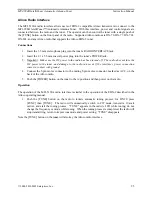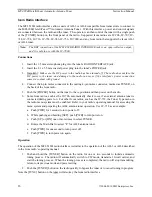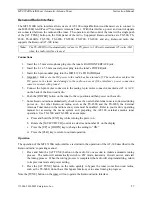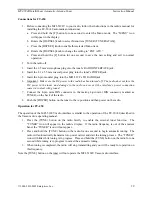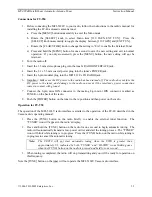
MFJ-994B IntelliTuner Automatic Antenna Tuner
Instruction Manual
©
2004-2010 MFJ Enterprises, Inc.
16
Meter Needle Bounce Codes
(Meter needles bounce to the indicated mark until buttons are released.)
Forward
30 Watts Mark
100 Watts Mark
300 Watts Mark
Capacitor
Switches To
Transmitter Side
Insufficient Power to
Tune
(Forward < 2 Watts)
Power Too High to Tune
(Forward > 125 Watts, or
Forward > 75 Watts and SWR > 3)
Reflected
5 Watts Mark
20 Watts Mark
60 Watts Mark
Capacitor
Switches To
Antenna Side
Bypass Mode
(L = 0 and C = 0)
L or C at Its Limit
During
Manual Adjustment
Both Needles
30/5 Marks
100/20 Marks
300/60 Marks
Not Used
Not Used
Power Overload
(Forward > 600 Watts)
Table 3. Meter Needle Bounce Codes.
Transceiver Foldback
Modern transceivers with solid-state finals usually have a foldback circuit to protect the final transistors
from damage due to high SWR. A foldback circuit detects the SWR during transmit and reduces the
output power as the SWR rises above a preset threshold, usually 2:1. The higher the SWR, the lower the
power is set to prevent damage.
If your transceiver has a foldback circuit, you can simply key down and tune at any power level from 2 to
100 watts. If your transceiver does not have a foldback circuit, you must manually set the power level to
20 watts or less for tuning. At higher power levels, the reflected power occurred during tuning can
damage your transceiver or amplifier and causes component arcing which can damage the relays in the
tuner.
Check your transceiver owner's manual to see if it has a foldback circuit. When an amplifier is used, the
amplifier must be bypassed during tuning.
Note: MFJ recommends that a transceiver-specific interface cable be used between the MFJ-994B
and your transceiver to ensure that tuning only occurs at low power.
Grounding Hints
To minimize RFI, single wire feedlines (such as used with Windom or longwire antennas) should be kept
away from other wiring. Radiation will be minimized if the single wire feeder runs parallel and
reasonably close to the wire that connects the tuner to the outdoor ground. The antenna feed wire should
be adequately insulated to prevent arcing or accidental contact.










